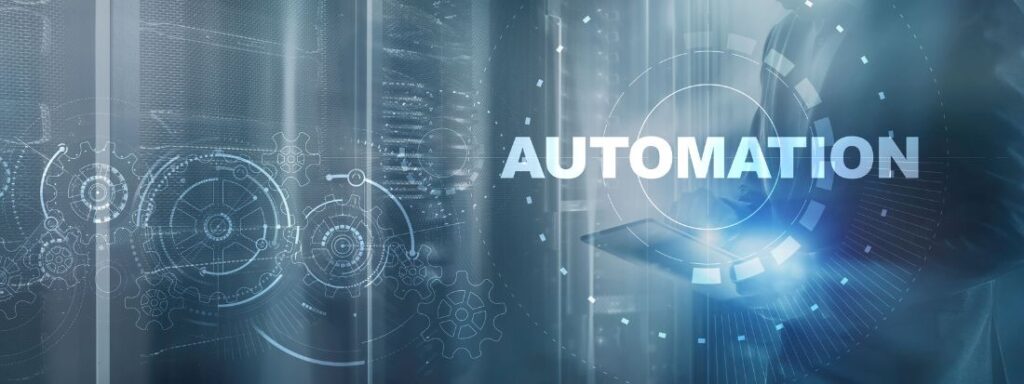
Before we delve into the benefits of human-centered automation in the manufacturing industry, let’s first define what it is. Human-centered automation is a design approach that prioritizes the needs, capabilities, and preferences of humans in the automation process. It aims to create a harmonious relationship between humans and machines by considering the strengths and limitations of each.
The manufacturing industry is a sector that has seen significant advances in automation. From assembly line robots to predictive maintenance systems, automation has revolutionized the way products are made. However, as automation becomes more prevalent, it is important to consider the impact on employees. Human-centered automation seeks to create a work environment that is safe, efficient, and enjoyable for employees.
Safety is a top priority in the manufacturing industry. With the use of heavy machinery and hazardous materials, accidents can have serious consequences. Human-centered automation can help reduce the risk of accidents by using machines to perform dangerous tasks. For example, collaborative robots (cobots) can work alongside humans to handle heavy lifting or repetitive tasks. This not only reduces the risk of injury but also allows employees to focus on tasks that require human skills such as problem-solving and decision-making.
Efficiency is another important factor in the manufacturing industry. Human-centered automation can improve efficiency by automating repetitive or time-consuming tasks. For example, augmented reality (AR) can be used to provide employees with real-time instructions, reducing the time it takes to complete a task. Internet of Things (IoT) devices can also be used to monitor equipment and identify potential issues before they become major problems.
Cost reduction is a key benefit of automation in the manufacturing industry. By using machines to perform tasks, companies can reduce labor costs and improve productivity. Human-centered automation can also help reduce costs by minimizing downtime and improving product quality. For example, predictive maintenance systems can detect equipment issues before they cause a breakdown, reducing the need for costly repairs.
Automation can help improve the quality of products by reducing the risk of human error. For example, artificial intelligence (AI) can be used to analyze data and identify patterns that can improve product quality. Machines can also be programmed to perform tasks with a higher level of precision, resulting in more consistent and accurate products.
Employee satisfaction is an important factor in any industry. By implementing human-centered automation, companies can create a work environment that is safe, efficient, and enjoyable for employees. This can lead to higher job satisfaction, lower turnover rates, and improved productivity.
Cobots are robots that can work alongside humans to perform tasks. They are designed to be safe and easy to use, and can be programmed to perform a variety of tasks. Cobots can help reduce the risk of injury by handling dangerous or heavy tasks, allowing employees to focus on tasks that require human skills.
AR technology can be used to provide employees with real-time instructions and information. For example, an AR headset can display instructions on how to assemble a product, reducing the time it takes to complete the task. AR can also be used for training purposes, allowing employees to practice tasks in a virtual environment.
IoT devices can be used to monitor equipment and collect data in real-time. This data can be used to identify potential issues before they become major problems, reducing downtime and improving productivity. IoT can also be used to track inventory levels, ensuring that the right materials are always available.
AI can be used to analyze data and identify patterns that can improve product quality. For example, AI algorithms can analyze sensor data to detect anomalies and predict equipment failures. AI can also be used to optimize production schedules, reducing waste and improving efficiency.
While there are many benefits to human-centered automation, there are also several challenges that must be addressed. Here are some of the most common challenges:
Implementing human-centered automation can be expensive, particularly for small businesses. The initial costs of purchasing equipment and retraining employees can be a significant barrier to adoption.
Implementing human-centered automation often requires retraining employees. This can be a time-consuming process, and some employees may resist change.
Human-centered automation systems must be integrated with existing systems, such as enterprise resource planning (ERP) systems. This can be a complex process that requires careful planning and coordination.
As with any automated system, human-centered automation is vulnerable to cyber attacks. Companies must take steps to protect their systems from hackers and other cyber threats.
To successfully implement human-centered automation, companies must have a clear plan and strategy. Here are some strategies for implementing human-centered automation in the manufacturing industry:
The first step in implementing human-centered automation is to identify areas that can be improved. This may involve analyzing data and identifying bottlenecks or inefficiencies in the production process.
Once areas for improvement have been identified, a plan for implementation must be created. This plan should include a timeline, budget, and a list of necessary equipment and resources.
Employees must be involved in the implementation process from the beginning. This includes providing training and support, and addressing any concerns or questions they may have.
Human-centered automation should be designed to improve efficiency, not replace human workers. By automating repetitive or dangerous tasks, employees can focus on tasks that require human skills, such as problem-solving and creativity.
To ensure the success of human-centered automation, companies should establish metrics for measuring progress and success. This may include metrics such as productivity, quality, and employee satisfaction.
Human-centered automation is an important concept in the manufacturing industry. By combining the strengths of humans and machines, companies can improve productivity, efficiency, and product quality. However, implementing human-centered automation requires careful planning, communication, and investment. Companies that are successful in implementing human-centered automation will see improved employee satisfaction, higher quality products, and increased profitability.
Contact Us
Related
Get started with Axacute and improve your business operations.